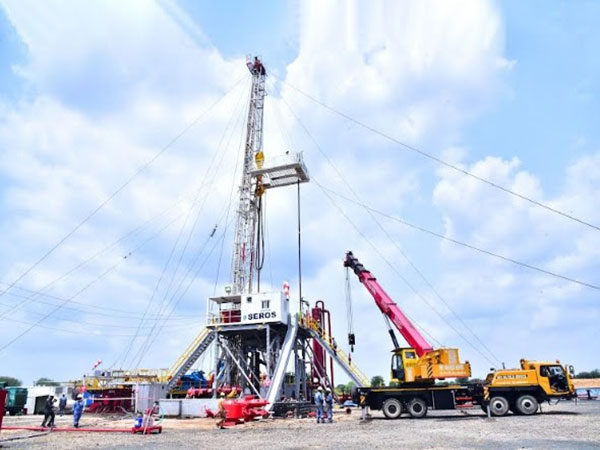NewsVoir
Mumbai (Maharashtra) [India], July 25: India, a rapidly developing nation, is on a path to energy independence. The pursuit of clean, reliable, and sustainable energy sources is very important. Among the various renewable energy options, geothermal energy stands out due to its immense potential and numerous benefits. For India, a country with vast untapped geothermal potential, this energy source could be the key to achieving energy independence and a greener future.
The Basics of Geothermal Energy Production
Geothermal energy production taps into the Earth’s natural heat reservoirs through a process that involves drilling wells into underground pools of steam and hot water. This thermal energy is then harnessed to drive turbines connected to generators, producing electricity. There are three primary methods of geothermal energy production, each suited to different geological conditions and resource characteristics.
Dry Steam Power Plants: The simplest of the three methods, dry steam power plants pipe steam directly from underground reservoirs to the power plant. This high-pressure steam is used to fuel turbines, generating electricity with remarkable efficiency. These plants are ideal for areas with naturally occurring steam reservoirs.
Flash Steam Power Plants: This method utilizes geothermal reservoirs containing water at temperatures greater than 182°C. As this superheated water flows upward through wells under its own pressure, the decrease in pressure causes some of the water to flash into steam. This steam is then separated and used to power turbines and generators, while the remaining water can be flashed again to extract more energy or reinjected into the reservoir.
Binary Cycle Power Plants: For regions with lower temperature geothermal resources (between 107-182°C), binary cycle power plants offer an effective solution. These plants use the heat from hot water to boil a secondary working fluid, typically an organic compound with a low boiling point. The vaporized working fluid drives the turbines, while the geothermal water is reinjected into the ground to be reheated, creating a sustainable cycle.
Beyond Electricity: Direct Applications of Geothermal Energy
Geothermal energy’s applications extend beyond electricity generation. One of its most practical uses is in heating and cooling buildings through geothermal heat pumps. These systems utilize a network of underground pipes to absorb the Earth’s stable temperature. In winter, the relatively warmer ground heats a fluid circulating through the pipes, which is then used to warm buildings. In summer, the process is reversed, with the Earth acting as a heat sink to cool the buildings.
Advantages of Geothermal Energy
Environmental Benefits: Geothermal energy stands out as an exceptionally clean energy source. It releases minimal greenhouse gases or air pollutants compared to fossil fuels, making it an environmentally friendly choice. Moreover, its sustainability is unparalleled, as the Earth’s heat is constantly replenished, ensuring a long-term renewable energy source.
Reliability and Consistency: Unlike solar or wind power, which depends on weather conditions, geothermal plants can generate electricity 24/7, 365 days a year. This consistent output makes geothermal energy an excellent source of baseload power, crucial for maintaining a stable electricity grid. Additionally, geothermal power plants boast high energy conversion efficiency, producing more electricity with less energy input compared to many other power generation methods.
Land Use and Aesthetics: Geothermal power plants require a much smaller land area compared to wind farms or solar panel arrays, minimizing their impact on the surrounding environment. Their low visual impact and often remote locations make them less disruptive to landscapes, an important consideration in densely populated countries like India.
Energy Independence: For countries like India, developing domestic geothermal resources could significantly reduce dependence on imported fossil fuels, enhancing energy security and independence.
Case Study: Kenya’s Geothermal Success Story
To understand the transformative potential of geothermal energy, we can look to Kenya as a compelling example. This East African nation, once grappling with a significant energy deficit, has embraced geothermal power to remarkable effect. The Great Rift Valley that runs through Kenya holds vast geothermal resources, which the country has strategically harnessed to address its energy challenges.
Kenya’s geothermal journey has yielded impressive results. As of 2023, the country boasts an installed geothermal capacity of approximately 891.8 MW, accounting for roughly 29% of its total power generation capacity. The Olkaria complex stands as the crown jewel of Kenya’s geothermal efforts, with several operational power plants utilizing steam from the Earth’s interior to generate clean electricity.
The benefits of Kenya’s geothermal push have been multifaceted. Increased power generation has translated to more reliable and affordable electricity for households and businesses, empowering communities and enabling activities like education, healthcare, and entrepreneurship to flourish. This access to electricity has had a cascading positive effect on the economy, with farmers utilizing electric irrigation pumps for better harvests and businesses operating longer hours, boosting productivity and job creation.
The shift towards geothermal energy has also yielded significant environmental benefits. As Kenya transitions away from fossil fuels, air pollution levels have declined, leading to improved public health outcomes, particularly for respiratory illnesses. Furthermore, geothermal energy’s minimal carbon footprint positions it as a powerful tool in Kenya’s fight against climate change.
Looking ahead, Kenya’s ambitions in the geothermal sector are even more impressive. The country’s Vision 2030 development plan aims to achieve a remarkable 5,530 MW of geothermal power by 2030, which would make it the largest source of clean energy in Kenya, surpassing even hydropower. With estimates suggesting a geothermal potential of 7,000 MW to 10,000 MW spread across 14 prospective sites within the Great Rift Valley, Kenya is well-positioned to continue its geothermal success story.
India’s Geothermal Potential and Challenges
India, with its estimated 10 GW of geothermal power capacity identified by the Geological Survey of India, stands at a pivotal moment. The country has significant geothermal potential, with 350 identified locations across various regions. However, the development of this resource remains in its early stages, with little progress made thus far.
The challenges facing India’s geothermal development are not insignificant. High upfront costs, lack of technical expertise, and regulatory hurdles have all contributed to the slow pace of progress. However, the potential benefits – including reduced reliance on fossil fuels, improved energy security, and environmental advantages – make overcoming these challenges a worthwhile endeavor.
Strategies for Unlocking India’s Geothermal Potential
Drawing inspiration from Kenya’s success and adapting strategies to India’s unique context, several key actions can help unlock the country’s geothermal potential:
Prioritize Exploration and Investment: Focus on detailed exploration of geothermal provinces like the Himalayas and Cambay Basin. Attract investments through favorable policies, such as allowing 100% FDI for geothermal projects.
Develop a Skilled Workforce: Establish geothermal engineering programs and collaborate with experienced international players to build expertise in geothermal technologies and operations.
Streamline Regulations: Create a clear and efficient regulatory framework for geothermal development to expedite project approvals while maintaining necessary environmental safeguards.
Launch Public Awareness Campaigns: Educate citizens about the benefits of geothermal energy to create a positive perception and encourage private sector participation.
Focus on Cost-Effective Technologies: Collaborate with international partners and research institutions to develop and adapt cost-effective geothermal technologies suitable for India’s geological conditions.
Implement Pilot Projects: Demonstrate the viability of geothermal energy through successful pilot projects to attract larger-scale investments.
Explore Decentralized Applications: While pursuing large-scale power generation, also investigate smaller-scale applications of geothermal energy, such as heating buildings and greenhouses.
Conclusion: A Geothermal Future for India
The journey to harness India’s geothermal resources may be challenging, but the rewards are immense. As the world increasingly turns to renewable energy sources, India has a golden opportunity to emerge as a leader in geothermal power. By tapping into the Earth’s heat, India can power its growth, reduce its carbon footprint, and pave the way for a cleaner, more prosperous future for generations to come.
As India stands on the brink of a potential geothermal revolution, the path forward is clear. By learning from developing countries like Kenya, taking strategic actions, and fostering innovation, India can transform its geothermal potential into reality. This shift towards geothermal energy not only promises a more sustainable and secure energy future but also aligns with India’s broader goals of energy independence and environmental stewardship.
(ADVERTORIAL DISCLAIMER: The above press release has been provided by NewsVoir. ANI will not be responsible in any way for the content of the same)
Disclaimer: This story is auto-generated from a syndicated feed of ANI; only the image & headline may have been reworked by News Services Division of World News Network Inc Ltd and Palghar News and Pune News and World News
HINDI, MARATHI, GUJARATI, TAMIL, TELUGU, BENGALI, KANNADA, ORIYA, PUNJABI, URDU, MALAYALAM
For more details and packages













